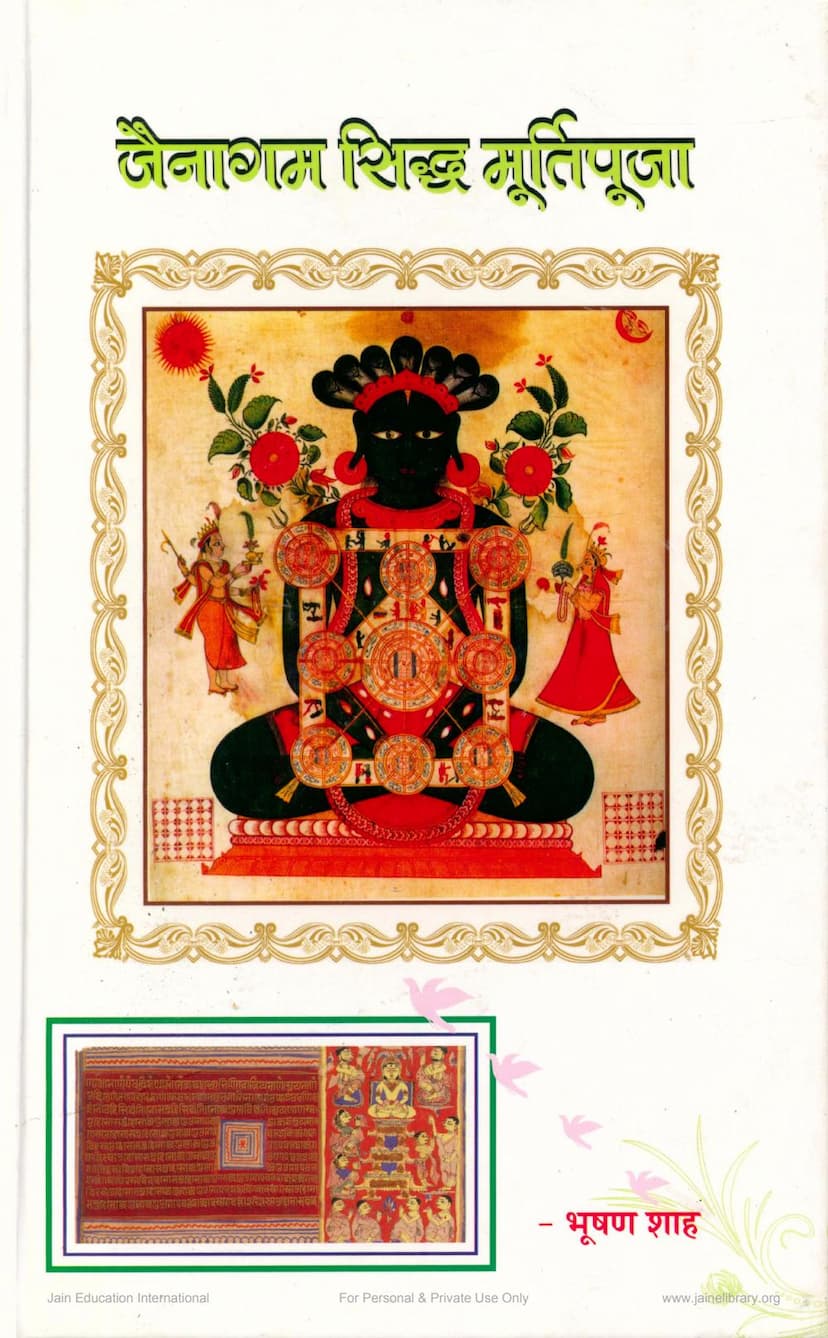Jainagam Siddh Murtipuja
Added to library: September 2, 2025

Summary
The book "Jainaagam Siddh Murtipuja" by Bhushan Shah, published by Chandroday Parivar, is a comprehensive defense and affirmation of idol worship (Murti Puja) within Jainism, specifically addressing and refuting arguments against it, primarily from the Sthanakvasi tradition. The author meticulously analyzes various Jain scriptures and historical contexts to establish the validity and importance of Murti Puja.
Here's a breakdown of the key themes and arguments presented in the book:
Core Argument:
The central thesis of the book is that Murti Puja is an integral and valid practice within Jainism, supported by Jain Agamas (scriptures) and historical evidence. The author aims to demonstrate that the opposition to Murti Puja, particularly from the Sthanakvasi sect, is based on misinterpretations, selective readings of scriptures, and a rejection of established traditions.
Key Themes and Arguments:
-
Agamic Support for Murti Puja:
- The book systematically cites numerous passages from various Jain Agamas (such as Acharaanga, Sutrakṛtaanga, Sthanaanga, Samavaayaanga, Bhagavati, Niyukti, Churni, Bhashya, Tika, etc.) that mention or allude to temples (Jinmandir/Chaitya), idol worship (Jinpratima/Murti Puja), and rituals associated with them.
- Words like "Chaitya," "Jinaghar," "Jinvandan," "Jinpratima," "Chaityayan," "Siddhashilan," and "Dravya Puja" are explained and argued to refer to idols and their worship.
- The author refutes Sthanakvasi interpretations that try to redefine these terms to exclude idols, arguing that such interpretations are a distortion of the original meaning.
-
Historical Evidence:
- The book presents historical and archaeological evidence, including findings from Mathura's Kankali Tila, and mentions of ancient Jain temples and sculptures in various parts of India and even Cambodia.
- It highlights that historical records and archaeological discoveries point to the antiquity and prevalence of Murti Puja in Jainism, predating the Sthanakvasi movement.
- The author points to the construction of temples and creation of idols by significant historical Jain figures and rulers like Emperor Samprati, King Kumarpal, and ministers like Vastupal-Tejpal as evidence of the practice's importance.
-
Refutation of Sthanakvasi Arguments:
- The book dedicates significant portions to directly critiquing and dismantling the arguments presented by Sthanakvasi scholars, particularly referencing a book titled "Jainaagam Viruddh Murtipuja" by Ratanlal Doshi.
- Violence (Himsa): The author addresses the Sthanakvasi claim that Murti Puja involves violence (e.g., through lamps, incense, flowers) by arguing that any unavoidable violence in religious practices is considered "Swarup Himsa" (inherent violence) and is permissible when done with pure intentions ("Jayaṇā Purvak"). This is contrasted with the Sthanakvasi practice of consuming root vegetables containing multiple lives.
- "Jad" (Inanimate) vs. "Chetan" (Conscious): The Sthanakvasi argument that idols are inanimate and therefore cannot grant spiritual benefits is countered by explaining that idols serve as a tangible focus for devotion, aiding in concentration and invoking devotion, much like a photograph of a loved one. The "Jad" (inanimate) nature of scriptures is also pointed out, yet they are respected for the knowledge they impart.
- "Kutark" (Fallacious Arguments): The author repeatedly labels Sthanakvasi arguments as "Kutark" (fallacious reasoning), "Abhinivesh" (prejudice/obstinacy), and "Kapolkalpit" (imaginary/fabricated) to highlight their perceived lack of scriptural basis.
- Selective Interpretation: The book criticizes the Sthanakvasi tendency to accept certain scriptural passages while rejecting others that support Murti Puja, accusing them of distorting meanings and creating new interpretations.
- Guru Worship vs. Tirthankar Worship: The author strongly criticizes the Sthanakvasi practice of constructing samadhi mandirs, foot-print stones (paglya), and even statues for their gurus while simultaneously opposing the worship of Tirthankar idols. This is presented as a clear hypocrisy.
-
The Importance of "Dravya Nichep" (Material Depiction):
- The book emphasizes the concept of "Nichep" (categories of reality) in Jain philosophy, particularly "Dravya Nichep" (material depiction) and "Sthapana Nichep" (established representation).
- It argues that idols are valid "Sthapana Nichep," representing the Tirthankaras, and are therefore worthy of worship. The author explains that even inanimate objects can become objects of reverence due to their association with the sacred (e.g., a guru's photo, a national flag).
- The "Namoṭṭhuṇaṁ" mantra is presented as a key scriptural affirmation of worship directed towards Tirthankaras, and by extension, their idols.
-
Psychological and Spiritual Benefits of Murti Puja:
- The book discusses how Murti Puja can help cultivate devotion, concentration, and auspicious thoughts, leading to spiritual progress and the purification of the soul.
- It emphasizes that the emotional connection and faith of the devotee are crucial, and idols serve as a powerful aid in this process.
-
The Origin and Nature of the Sthanakvasi Tradition:
- The author traces the origins of the Sthanakvasi tradition to figures like Lonkashah, describing it as a movement that arose primarily due to opposition to Murti Puja, lacking strong scriptural or historical grounding.
- The book alleges that the Sthanakvasi tradition has a history of altering scriptures and fabricating interpretations to support its views.
-
The Role of Tirthankara Idols:
- The book asserts that idols of Tirthankaras are not mere stone but are representations of their divine qualities and are thus worthy of veneration. They serve as a constant reminder of the path to liberation.
Structure and Content:
The book is structured thematically, with each chapter (indicated in the table of contents) addressing a specific Sthanakvasi argument or scriptural reference. The author provides detailed critiques and counter-arguments, often quoting scripture and explaining its intended meaning. The appendices (Parishisht) contain further scriptural citations, letters, and historical information to bolster the arguments.
Overall Tone:
The tone is strongly argumentative and defensive, aimed at firmly establishing the legitimacy of Murti Puja within Jainism and refuting what the author perceives as unfounded criticisms. While passionate, the author aims to ground his arguments in scriptural authority and historical fact.
In essence, "Jainaagam Siddh Murtipuja" is a scholarly and polemical work that seeks to reaffirm the traditional Jain practice of idol worship, asserting its scriptural basis, historical significance, and spiritual benefits, while critically dismantling the arguments of its opponents.